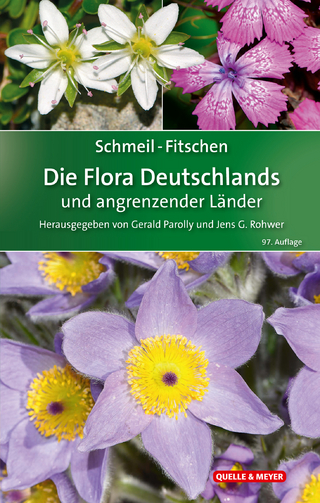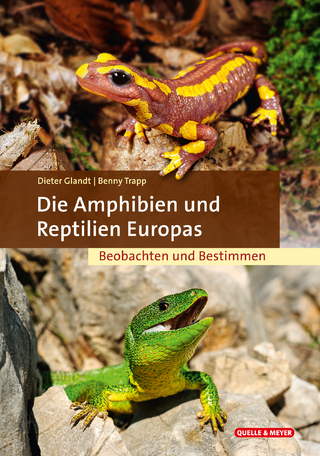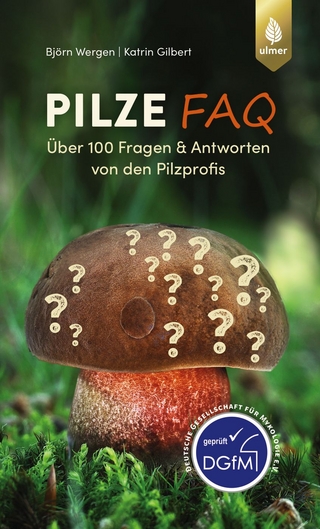
Biology and Evolution of Crocodylians
Comstock Publishing Associates (Verlag)
978-0-8014-5410-3 (ISBN)
Crocodiles, alligators, caimans, and gharials—the Crocodylia, known collectively as crocodylians—are the world’s largest living reptiles. The largest of them, probably the estuarine or saltwater crocodile, Crocodylus porosus, can grow to almost twenty feet and weigh more than two thousand pounds. Crocodylians are creatures of great contrast. They can remain patiently still for ages, yet can also move like lightning to snap up a meal. They are formidably strong, active predators, with jaws that can tear apart large prey items, yet a mother or a father can gently assist hatchlings out of the eggs, and carry them to the water between their teeth. Because large crocodylians can (and do) eat people, they invite fear and loathing, but they also inspire curiosity and admiration.
Biology and Evolution of Crocdylians is a comprehensive review of current knowledge about the world’s largest and most famous living reptiles. Gordon Grigg’s authoritative and accessible text and David Kirshner’s stunning artwork and color photographs combine expertly in this contemporary celebration of crocodiles, alligators, caimans, and gharials. This book showcases the skills and capabilities that allow crocodylians to live how and where they do. It covers the biology and ecology of the extant species, conservation issues, crocodilian-human interaction, and the evolutionary history of the group.
Richly illustrated with more than five hundred color photographs and black-and-white illustrations, this book will be a benchmark reference work for crocodylian biologists, herpetologists, and vertebrate biologists for years to come.
Gordon Grigg is Emeritus Professor of Biological Sciences at the University of Queensland. David Kirshner has illustrated several books on wildlife. Rick Shine AM FAA is a Laureate Fellow of the Australian Research Council and Professor of Biological Sciences at the University of Sydney.
Foreword
Preface
Acknowledgements1. INTRODUCTION
Introducing crocodylians
The living species of crocodylians
The growth of scientific knowledge about crocodylians
Body size and age2. THE CROCODYLIAN FAMILY TREE
The modern crocodylians and their relationships
Extinct Crocodylia and other crocodile-like reptiles; crocs in 'deep time'
Summary3. CROCODYLIANS CLOSER UP
The external features of crocodylians
Skull and musculoskeletal system4. LOCOMOTION, BUOYANCY, AND TRAVEL
Crocodylians on land
Crocodylians in the water
Buoyancy
Stomach stones (gastroliths)
Capacity for long distance travel5. SENSORY SKILLS AND BRAIN
Vision
Hearing, movement and balance
Brain and cranial nerves
Olfaction and gustation (chemosensation)
Sense organs of the skin
Cognitive capacities and learning6. FEEDING, DIGESTION, AND NUTRITION
What do crocodylians eat?
Prey capture and handling
Digestion
Nutrition7. ENERGY SUPPLY AND DELIVERY
The metabolic engines: crocodylian biochemistry and metabolism
Whole body metabolism (anaerobic and aerobic)
The respiratory system
The circulatory system8. THE WORLD'S MOST EXTRAORDINARY HEART
A tour of the crocodylian heart
Non-shunting and shunting patterns of blood flow
What is the significance of pulmonary by-pass shunting in crocodylians?9. DIVING AND SUBMERGENCE BEHAVIOUR AND PHYSIOLOGY
When? Why? How deep? How, and how for so long?
Diving behaviour of crocodylians in the wild
Physiological support for crocodylian diving
What are the longest submergences by crocodylians that can be supported aerobically?10. THERMAL RELATIONS
Introduction: crocodylians are not like other reptiles
Daily and seasonal patterns of body temperature
Behaviours that modify body temperature
Physiological mechanisms of thermoregulation
Thermal acclimatization
Crocodylians may have endothermic ancestry
Could even the basal archosaurs have been endothermic?11. SALT AND WATER BALANCE
Salt and water balance in Crocodylus porosus: an introduction to crocodylian osmoregulation
Salt and water balance in other crocodylians
Living out of water, 'aestivation'
Salt glands and implications for crocodylian evolutionary history12. REPRODUCTION
Introduction: they’re more like birds
Oviducts, ovulation, fertilisation and the gravid stage13. POPULATIONS AND POPULATION ECOLOGY
Populations (and species)
Population dynamics: changes through time
Case Histories14. CONSERVATION, COMMERCIALISATION, AND CONFLICT
Introduction
Historical perspective
The future for crocodylians?INDEX
| Vorwort | Richard Shine |
|---|---|
| Verlagsort | Ithaca |
| Sprache | englisch |
| Maße | 197 x 260 mm |
| Gewicht | 2268 g |
| Themenwelt | Sachbuch/Ratgeber ► Natur / Technik ► Naturführer |
| Naturwissenschaften ► Biologie ► Evolution | |
| Naturwissenschaften ► Biologie ► Zoologie | |
| ISBN-10 | 0-8014-5410-7 / 0801454107 |
| ISBN-13 | 978-0-8014-5410-3 / 9780801454103 |
| Zustand | Neuware |
| Haben Sie eine Frage zum Produkt? |
aus dem Bereich


